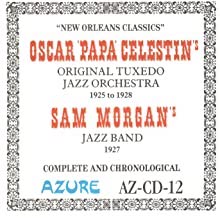
Daily Dose Of Jazz…
Abbey “Chinee Bébé” Foster was born on January 9, 1902 in New Orleans, Louisiana. A self-taught jazz drummer, he played in Storyville with William Ridgley’s Tuxedo Orchestra, and with Buddie Petit in the Eagle Band.
He recorded with Celestin’s Original Tuxedo Jazz Orchestra in 1927. After years of retirement, he made a comeback with Punch Miller’s Band at Preservation Hall in 1961.
On September 12, 1962 drummer Abbey Foster transitioned in his hometown.
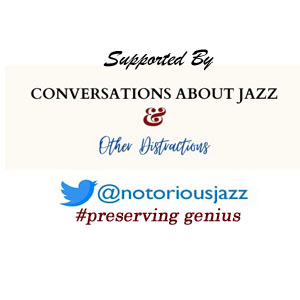
More Posts: drums,history,instrumental,jazz,music
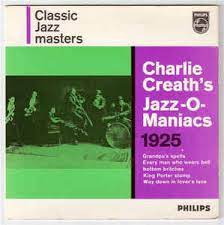
Daily Dose Of Jazz…
Charles Cyril Creath was born on December 30, 1890 in Ironton, Missouri and at an early age was playing in traveling circuses and in theater bands in the decade of the 1900s. He moved back to St. Louis, Missouri around 1919 and there he led bands playing on the Streckfus company’s riverboats traveling on the Mississippi River between New Orleans, Louisiana and St. Louis.
His ensembles became so popular that he had several bands under his own name at one time in the 1920s. A young Gene Sedric, later a mainstay of Fats Waller’s combo and orchestra, played with Creath on riverboats in the 1920s, and perhaps early 1930s. He co-led a group on the SS Capitol in 1927 with Fate Marable.
Late in the 1920s Charlie suffered from an extended illness, and primarily played saxophone and accordion instead of trumpet afterwards. He and Marable played together again from 1935 to 1938, and toward the end of the decade he opened a nightclub in Chicago, Illinois. He worked in an airplane manufacturing plant during World War II and retired in 1945. His last years were plagued with illness.
Aside from his brother-in-law, Zutty Singleton, members of Creath’s bands included Ed Allen, Pops Foster, Jerome Don Pasquall, Leonard Davis, and Lonnie Johnson. He recorded as a leader for Okeh Records between 1924 and 1927 billed as Chas. Creath’s Jazz-O-Maniacs, which were some of the hottest and most collectable jazz items recorded for OKeh’s race 8000 series.
Trumpeter, saxophonist, accordionist and bandleader Charlie Creath passed away on October 23, 1951, in Chicago.
More Posts: accordion,bandleader,history,instrumental,jazz,music,saxophone,trumpet
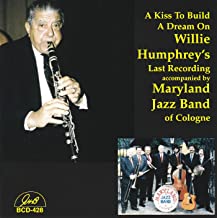
Daily Dose Of Jazz…
Willie James Humphrey was born on December 29, 1900 in New Orleans, Louisiana into a musical family, the son of prominent local clarinetist and music teacher Willie Eli Humphrey. His brothers Earl and Percy also became well known professional musicians.
After establishing himself with such New Orleans bands as the Excelsior and George McCullum’s band, Humphrey traveled north, playing with Lawrence Duhé, and King Oliver in Chicago, Illinois. In the 1920s he made his first recordings in St. Louis, Missouri.
Returning to New Orleans, he played for many years with the Eureka and Young Tuxedo Brass bands, the bands of Paul Barbarin and Sweet Emma Barrett, and the Preservation Hall Jazz Band.
Clarinetist Willie Humphrey, whose playing remained vigorous and continued to grow more inventive in his old age, passed away at 93 on June 7, 1994.
More Posts: clarinet,history,instrumental,jazz,music
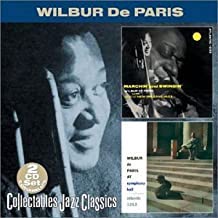
Daily Dose Of Jazz…
Edward L. Gibbs was born on December 25, 1908 in New Haven, Connecticut. A student of the great banjoist and bandleader Elmer Snowden, he went back and forth among three different stringed instruments during his career.
Gibbs began his career late in the 1920s, playing with Wilbur Sweatman, Eubie Blake, and Billy Fowler. He played with Edgar Hayes from 1937 and played with him on a tour of Europe in 1938. After a short stint with Teddy Wilson, he joined Eddie South’s ensemble in 1940, and worked later in the decade with Dave Martin, Luis Russell, and Claude Hopkins.
As a bassist, he led his own trio at the Village Vanguard and played in a trio with Cedric Wallace, but returned to banjo in the 1950s during the Dixieland jazz revival. He played and recorded with Wilbur de Paris among others during this time.
After studying with Ernest Hill, he returned to bass in the middle of the 1950s, but played banjo once again in the 1960s during another surge in interest in the Dixieland groups. He played at the World’s Fair in 1965 and in 1969 he played bass and occasionally banjo as a member of Buzzy Drootin’s Jazz Family, which included Herman Autrey, Benny Morton, Herb Hall, Sonny Drootin on piano and Buzzy on drums. Also, in the late ’60s he was part of a group called The Happy Family who featured him on both banjo and bass.
Banjoist, guitarist, and bassist Eddie Gibbs, who retired from active performance in the 1970s, passed away on November 12, 1994.
More Posts: bandleader,banjo,bass,guitar,history,instrumental,jazz,music
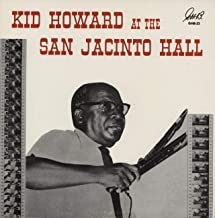
Daily Dose Of Jazz…
John Baptiste “Bat” Mosley was born on December 22, 1893 in Algiers, Louisiana, and was the brother of drummer Edgar Mosley. His father played guitar but began the youngster playing drums at age nine when he gave him a snare drum. He and his father would make money playing around town together.
Bat, however, did not work professionally until about 1923, and started with Tom Albert, then Joe Harris’ Royal Jazz Band, and later with Kid Howard. Throughout his career he also performed regularly with brass bands, including Kid Rena’s, Henry Allen’s, and the Eureka.
Drummer Bat Mosley passed away on July 28, 1965 in Algiers.
More Posts: drums,history,instrumental,jazz,music


